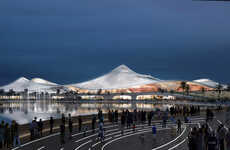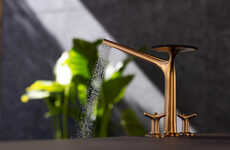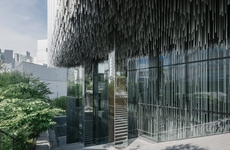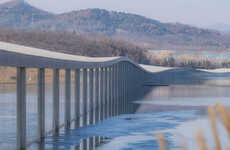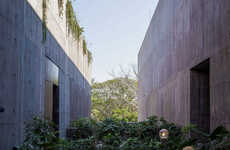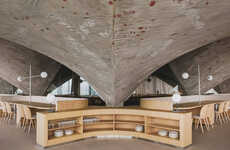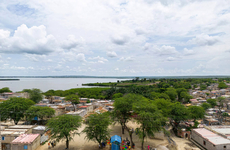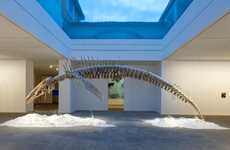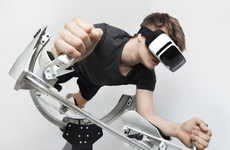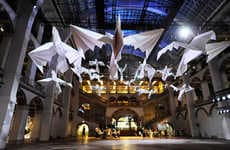
Lisbon's Water Museum Reflects Its Subject Matter in a Design That Flows
Rebecca Byers — May 20, 2015 — Art & Design
References: p-06-atelier.pt & retaildesignblog.net
The Water Museum in Lisbon is a stunning new tribute to the natural and manmade systems that regulate our water. Designed by P-06 Atelier, the awe-inspiring museum interior boasts a dark blue floor illuminated by glowing blue display fixtures, while a mirrored ceiling opens up the space and provides a disorienting yet gorgeous affect to the space.
The permanent exhibition is designed to follow the flow and movement of a watercourse, with each element of the intricately detailed space in some way mimicking the shape or other qualities in their design. An example of this is the display fixtures, which almost appear to take on the form of bodies of water on a map.
The visually stimulating nature of the Water Museum's permanent exhibit is targeted children and adolescents, although adults will surely find themselves equally as mesmerized by the space.
The permanent exhibition is designed to follow the flow and movement of a watercourse, with each element of the intricately detailed space in some way mimicking the shape or other qualities in their design. An example of this is the display fixtures, which almost appear to take on the form of bodies of water on a map.
The visually stimulating nature of the Water Museum's permanent exhibit is targeted children and adolescents, although adults will surely find themselves equally as mesmerized by the space.
Trend Themes
1. Interactive Museum Experiences - The Aquatic Museum's immersive and visually stimulating exhibit demonstrates the rising trend of interactive museum experiences, inviting visitors of all ages to engage and explore.
2. Biophilic Design - The use of natural elements, such as the flowing floor and mirrored ceiling, in the Water Museum's design reflects the growing trend of biophilic design, which seeks to incorporate nature into indoor spaces.
3. Educational Entertainment Spaces - The Water Museum's focus on appealing to children and adolescents highlights the trend of creating educational entertainment spaces that seamlessly blend learning and fun.
Industry Implications
1. Museum and Exhibition Design - The Aquatic Museum's innovative interior design presents opportunities for disruptive innovation in the field of museum and exhibition design, pushing the boundaries of interactive and experiential storytelling.
2. Interior Design and Architecture - The use of biophilic design principles in the Water Museum's space opens up possibilities for disruptive innovation in the field of interior design and architecture, where the incorporation of natural elements creates captivating and harmonious environments.
3. Edutainment and Children-focused Industries - The Aquatic Museum's emphasis on engaging children and adolescents provides opportunities for disruptive innovation in the edutainment and children-focused industries, merging entertainment and education to create memorable experiences.
2.9
Score
Popularity
Activity
Freshness


